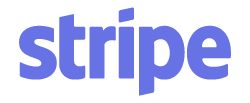On-Budget Software That May Improve Your Teaching
The proliferation of new technology is rapidly changing the world. These changes permeate into all aspects of our society, and education is one of them. These innovations can help teachers produce higher-quality content and deliver it more efficiently to students. However, these new possibilities often come at a cost. The availability of certain software depends on the financial capabilities of institutions, but also those of teachers and students. The high cost of the software will always be a limiting factor, regardless of its effectiveness. For this very reason, we are going to look at some options which require little to no resources to implement.
YouTube
YouTube offers a wide variety of educational videos absolutely free of charge, and millions of people visit it every day for this particular reason. Whenever learners recognize a knowledge gap, YouTube is one of the first places they look for answers.
YouTube is an immense repository of immediately available educational content from professionals and experts of all kinds. Formats vary from full lectures to short instructional videos, which are especially suitable for microlearning. YouTube is supported on all devices, meaning that it is available to anyone who has internet access. This information is all the more important if we consider the fact that mobile learning and microlearning are some of the biggest eLearning trends for 2017.
By allowing access to a huge number of videos and providing a platform for sharing one’s own work, YouTube offers practically limitless possibilities to enrich almost any lesson. Given the fact that Cisco announced that by 2019, the video will account for 80 percent of global Internet traffic, and nearly a million minutes of video will be shared every second, YouTube’s popularity is only expected to increase.
Prezi
When Prezi first arrived, there was a lot of debate about whether it was better or worse than PowerPoint. The answer to which of the two is better largely depends on the preferred style of the presenter and that of the audience. However, we are looking for the most cost-effective solution and Prezi, being free, is doubtlessly more affordable.
So what makes Prezi a good eLearning tool, besides its price? It might be the fact that it is particularly useful for mind mapping. Mind maps can be used to visualize, organize, structure, and classify information and ideas, as well as a mnemonic technique. For all these reasons it is considered a valuable aid to studying. Cunningham conducted a user study in 2005 which showed that 80% of the students thought mind-mapping helped them understand concepts and ideas in science. A meta-study about concept mapping, a technique similar to mind mapping, concluded that concept mapping is more effective than “reading text passages, attending lectures, and participating in class discussions”. The same study also concluded that concept mapping is slightly more effective “than other constructive activities such as writing summaries and outlines”. Having in mind its comparison to a white-board, it makes sense that Prezi is especially suitable for this sort of thing.
Prezi allows for more personalization, the experience is more likely to be immersive and more engaging than traditional instruction. Learners are able to work more intuitively and creatively, which results in improved retention and recall of information. Also, the zooming feature is great for demonstrating complex concepts; for example, zooming into a cell to reveal its constituent parts. All things considered, Prezi could be a fun and useful tool for various activities, especially for group projects since it includes real-time collaborative presentation editing.
Social Networks
Social media channels can be powerful tools for learning. As long as students are working together, there will always be an aspect of social learning involved. As of 2016, we are, on average, spending 118 minutes on social media every day according to Statista. With all that time spent on social networks, we might as well learn something in the process.
Social networks are a perfect place to look for information. Facebook and LinkedIn users can create groups that make finding and interacting with other people who have the same interests a lot easier. Comment sections act as forums where one may get answers to all their questions. This feature allows for lively discussions and exchange of information and ideas. File sharing is also a great way to pick up course materials, notes, or any other kind of content.
Since it acquired the professional learning platform Lynda.com and developed LinkedIn Learning, LinkedIn has become the leader in this category. It provides its users with thousands of online courses in various fields, such as IT, management, and personal development.
Final Thoughts
The idea of making education accessible to everyone is one of the great ideas of eLearning. With technologies evolving every day it is easy to get carried away with the predictions and throw around wild claims. One can easily forget that the quality of instruction mostly depends on the teacher’s own abilities. Content and structure are what make a good lesson. That being said, teachers who have put some effort into designing their lessons have wonderful options to improve them even further, even if they are on a budget. In addition to that, YouTestMe provides an inexpensive platform that supports all aforementioned features and brings them together in a secure and highly-customizable whole.





